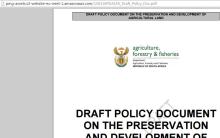/ library resources
Showing items 1 through 9 of 12.Focuses on two themes in the study of ethnopedology: (1) the hows and whys of indigenous soil classifications. (2) the differences and overlaps between indigenous soil classifications and western soil classifications.
Building soil conservation practices on a base of indigenous knowledge greatly increases the rate at which they are adopted by farmers in Burkina Faso.
Over the last 25 years civil disturbances, drought, population increases and global market pressures have all contributed in direct and indirect ways to a modification of Sub saharan African land cover.
In Nepal, natural factors such as heavy seasonal precipitation, the erosion-prone nature of the soil, steep topography and the removal of ground cover, make the country's hill soils particularly vulnerable to leaching of organic matter and micronutrients.
The Kailash Sacred Landscape (KSL) spreads across a vast region that includes remote portions of the Tibet Autonomous Region of China (TAR China) and contiguous areas of Nepal and India.
This study sought to determine a 22-year past and future land use and land cover trend and its implication on green spaces in an eThekwini Municipal Area’s peripheral settlement.
This article aims to explore the causes of informal settlements in Ekurhuleni Metropolitan Municipality (EMM).
The preservation, development and sustainable use of agricultural land are of vital importance to ensure long-term food security.
Pagination
Land Library Search
Through our robust search engine, you can search for any item of the over 73,000 highly curated resources in the Land Library.
If you would like to find an overview of what is possible, feel free to peruse the Search Guide.



